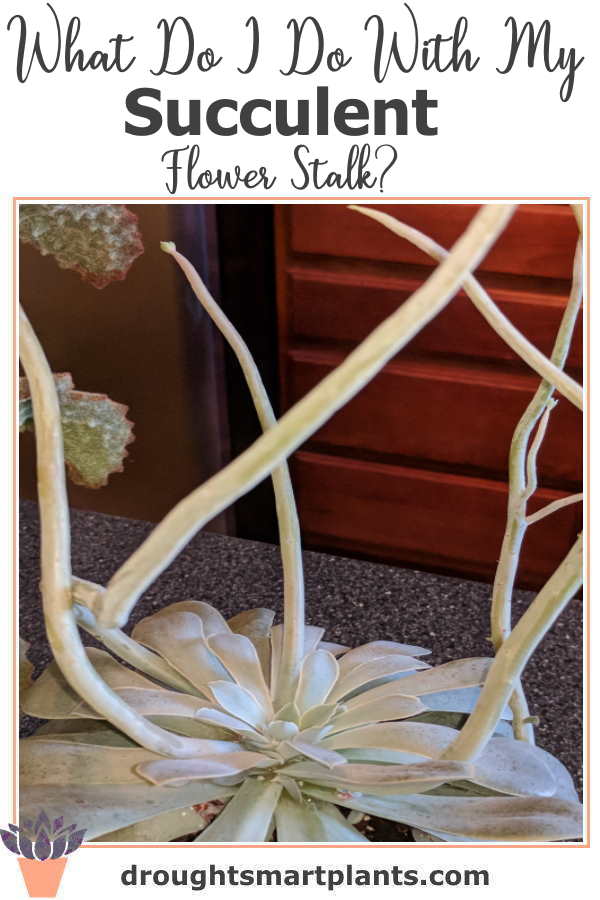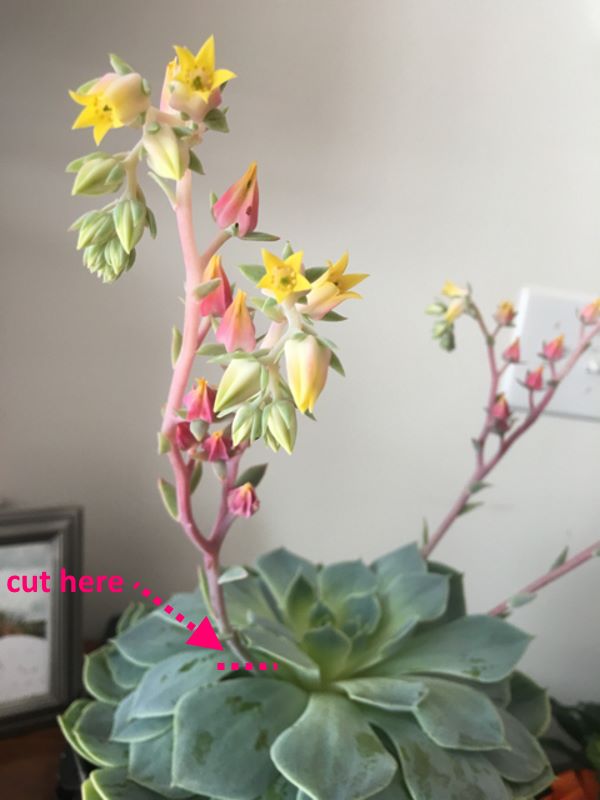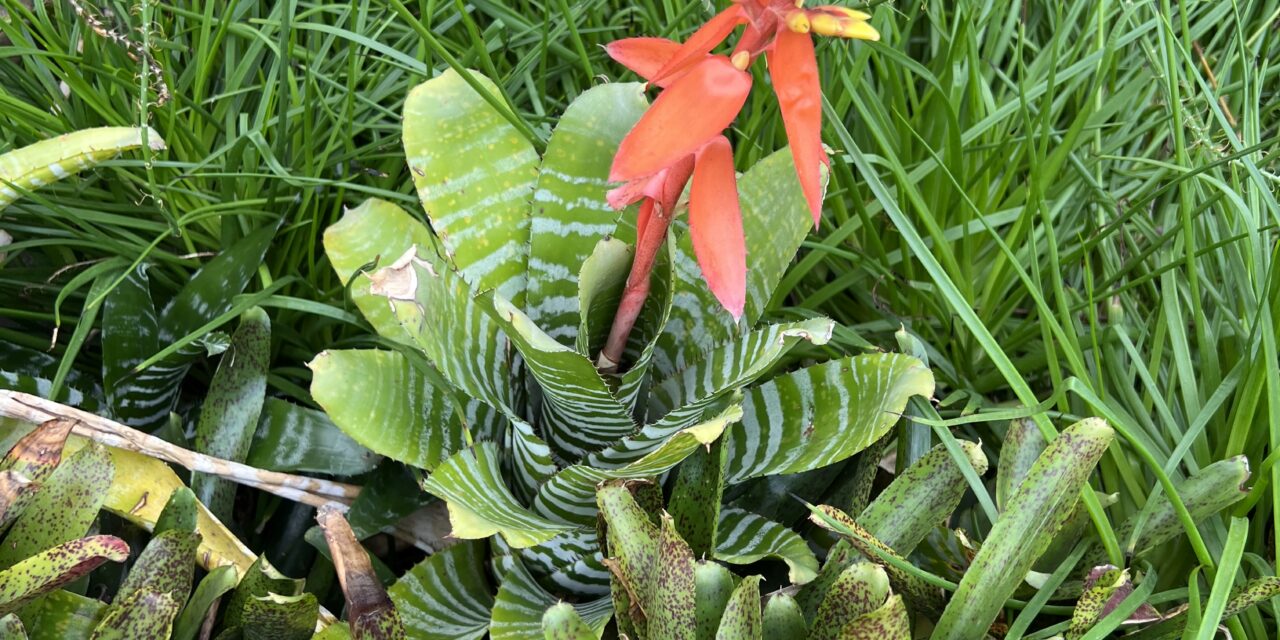Leave it, or cut it off?
It’s hard to know how to proceed when your succulent plant makes its first flower. They are gorgeous, opening in sequence from the lower part of the stalk to the outer end.

This is one reason it’s so important to identify your plants – some of them are perennial, and bloom many times in their lifespan.
Others are ‘monocarpic’ which means ‘once flowering’ and when they flower and set seed, the flowering rosette dies.
Many succulents, like Echeveria, bloom once a year, at the same time. This depends on the species and variety, but lots of them choose the late summer into fall to give us a show.
Kalanchoe of all kinds are another seasonal bloomer.
See more about Flowering Succulents.
Once the flowers start to fade, and the display is over for the year, then what? I’ve been asked this question a lot, from people still reeling from the beauty of the flower stalks with the bell shaped blooms.
As this picture shows, there can be several of these blooming stalks at the same time, spreading the display over several weeks to months. If the climate is dry, this helps the flowers stay in good shape for longer. In damp or humid conditions, most succulent flowers age a lot faster.
So if you’re wanting to collect the seeds from your succulent plant, you need more than one of the same kind to start.
They tend to only set seed if they’re pollinated by another plant – transfer the pollen from one plant to the other with a small paintbrush, doing the work of an insect.
If they’re outdoors, this step may not be necessary.

After you’ve enjoyed the show your plant has put on for you, the flowers have changed color and faded, and the plant is looking the worse for wear, feel free to carefully trim off the spent flower stalk.
Get as close to the base of it as possible without damaging those delicate leaves – a bruise or cut now will last the lifetime of the leaf.
Use the guide above to give you an indication of where to cut.
Use sharp pruning scissors, or bonsai scissors for a clean cut without bruising. Any damage can be a way for pathogens to enter the cells and spread.
See more about how to prune succulents here.



